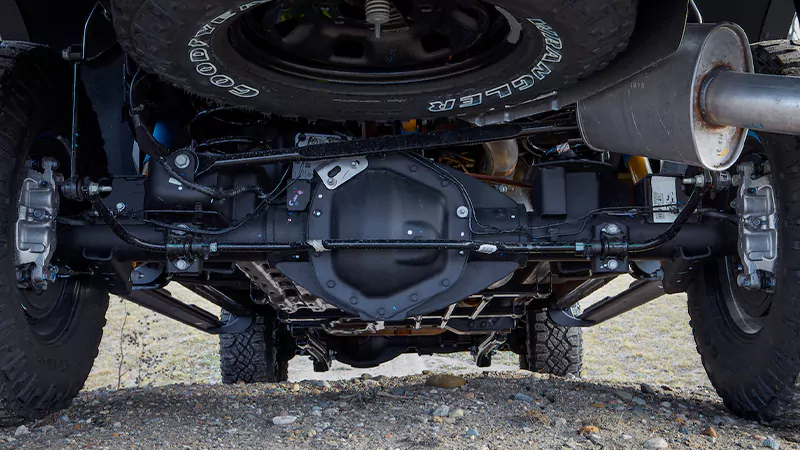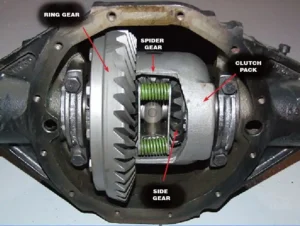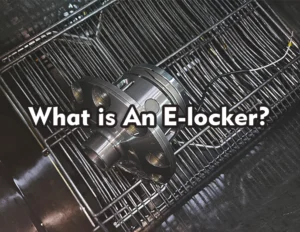When it comes to improving your vehicle’s performance, especially in off-road or high-powered builds, few components are as critical as the differential. It determines how power is distributed between wheels, and directly affects traction, handling, and drivability. But choosing the right differential isn’t just about picking the most expensive one or the one your favorite influencer uses. It’s about matching your choice to your driving needs, understanding what you’re paying for, and knowing the long-term implications of that choice.
In this article, we break down the key differences between differential types, discuss which suits specific driving applications, examine what sets high-quality units apart, explain what to expect in terms of warranty, and lay out the pricing landscape so you can make an informed, confident purchase.
What are the differences between the different types of diffs?
Open Differential
This is the most basic type of differential, found in most factory vehicles. It allows each wheel to spin at different speeds, which is great for cornering but terrible when traction is unequal. If one wheel loses grip, the open diff sends power to the wheel with less resistance—which is often the one spinning uselessly.
Best For: General street use, economy cars, and low-power builds.
Limited-Slip Differential (LSD)
LSDs improve on open differentials by distributing torque to the wheel with more grip. There are several designs:
- Clutch-type LSDs: Use friction plates to engage the second wheel
- Torsen (helical) LSDs: Use gears to bias torque
- Viscous LSDs: Use fluid resistance
Best For: Performance street driving, mild off-roading, and autocross.

Locking Differential
A locking differential can mechanically lock both wheels together, forcing them to rotate at the same speed regardless of traction differences. Some are manually engaged; others are automatic.
Best For: Hardcore off-roading, rock crawling, towing in low-traction environments.
Torque-Vectoring Differential
This is the most advanced (and expensive) type. It actively controls power distribution side-to-side using electronic sensors and actuators. The result is razor-sharp handling, especially in high-performance and all-wheel-drive vehicles.
Best For: High-end sports cars, AWD performance builds, and track applications.
Which one best suits what I am going to be doing with my rig?
You need to ask what you want your vehicle to do. An LSD may be perfect for your weekend canyon runs, but a locker is a must-have if you’re planning to hit the Rubicon Trail.
Daily Driver / Occasional Enthusiast
If your vehicle is your commuter and weekend toy, an LSD balances comfort with added performance. It gives better grip in rain and spirited cornering without making the car hard to live with.
Off-Road Builds
For sand, mud, or rocks, lockers reign supreme. You want maximum traction when one or more wheels are off the ground or buried. Front and rear lockers can be overkill for light trails but are essential for serious terrain.
Performance Street or Track
A clutch-type or helical LSD provides faster response and better control under hard acceleration. Torque-vectoring is ideal for those chasing lap times.
Towing / Heavy Loads
Lockers or robust LSDs help with traction on loose surfaces when pulling weight. Durability also becomes a priority here.

What quality differences are there between them all?
Quality isn’t just about materials—though that’s a big part of it. Manufacturing precision, design integrity, and durability under real-world stress matter just as much.
Materials
- Forged components are stronger and more durable than cast ones.
- High-grade steel and hardened gears resist wear and stress better.
- Cheap units often use subpar alloys and looser tolerances, which lead to failure under load.
Engineering
- Reputable brands invest in better tooth geometry, heat treatment processes, and gear meshing design.
- Quality LSDs will have smoother engagement and less noise.
- Lockers from top brands will cycle reliably and withstand repeated abuse.
Longevity
A $300 diff might seem like a good deal until it breaks mid-climb. High-end units often last longer, run quieter, and handle more torque.
What is the warranty on them?
Not all warranties are created equal. Some brands offer lifetime coverage. Others limit it to one or two years, or even exclude off-road use entirely.
Things to Watch
- Duration: Look for at least 2 years; many top brands offer lifetime warranties.
- Coverage: Does it cover wear, just defects, or failure under use?
- Exclusions: Some exclude race or off-road use, which defeats the point for many buyers.
Brands like Eaton and ARB are known for standing behind their products. Lesser-known or budget brands often have limited or vague warranty policies.
What are the different price points and what I am comfortable spending?
Entry-Level ($300 - $700)
You’ll find basic LSDs and some off-brand lockers here. They might work for light-duty applications, but may not handle much abuse. However, differentials from XJX Parts offer excellent value in this range. Despite their affordable price, they are built tough and proven to be durable in real-world conditions.
Mid-Range ($700 - $1,200)
This bracket includes reliable LSDs from trusted manufacturers and basic selectable lockers. A solid choice for most enthusiasts.
High-End ($1,200+)
Torque-vectoring diffs, premium selectable lockers, and racing-grade LSDs live here. You’re paying for cutting-edge design, bulletproof materials, and longevity.
Hidden Costs
- Installation labor (can range from $200 to $1,000)
- New fluids, bearings, or shims
- Axle upgrades or driveshaft modifications for high-power setups
What's Worth Paying For
- Smooth, consistent engagement
- Proven durability in harsh conditions
- Good manufacturer support
Ask yourself what failure would cost—in time, damage, or safety. In many cases, spending more upfront saves money and hassle long-term.
Final Thoughts
Choosing the right differential isn’t about hype or brand loyalty. It’s about matching the part to your purpose. Think about what your vehicle needs to do and how much abuse it will see. Study how different types behave in real conditions. Pay attention to quality, and don’t skimp on support or warranty.
Whether you’re building a trail beast, a canyon carver, or a workhorse that needs grip in all conditions, there’s a right differential out there for you. Take your time. Ask the right questions. And buy something you won’t have to replace after the first hard weekend.



